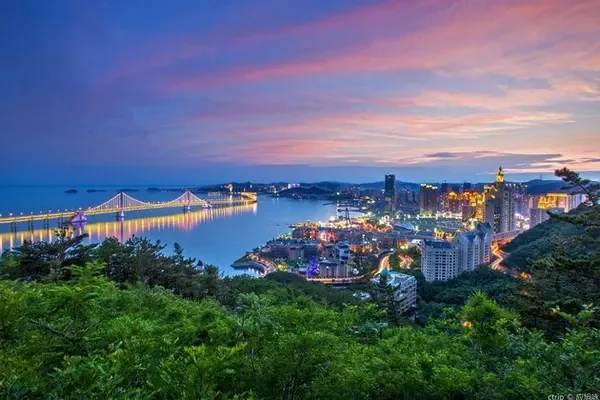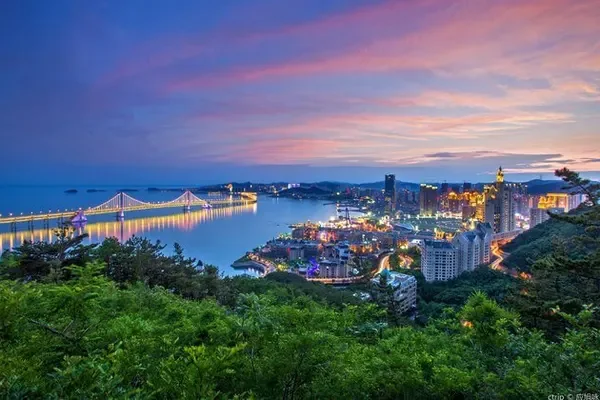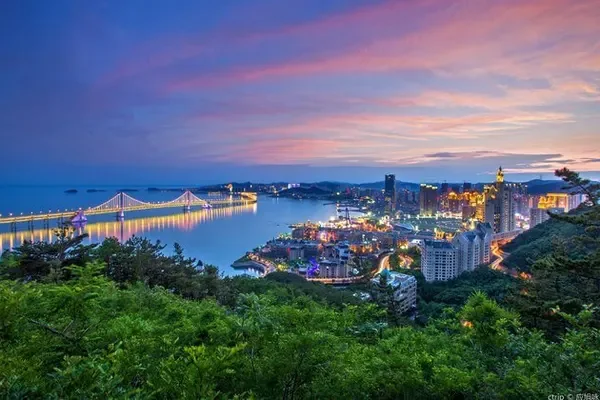Start Yushu Journey and unlock the new Tibetan area
Before I became a professional traveler, the destination of my first solo travel was Tibet. I am deeply impressed by the richness, profoundness and uniqueness of Tibetan areas. The majestic and magnificent scenery and the ancient and mysterious culture haunt me. I have always fantasized about exploring this distant and mysterious foreign land more. In the following years, I came here again and again, and the Tibetan area continued to bring me new surprises. This time, I will visit Yushu Tibetan Autonomous Prefecture in Qinghai Province.
Yushu Tibetan Autonomous Prefecture includes Yushu City and five counties including Chengduo County, Nangqian County, Zaduo County, Zhiduo County and Qumalai County. Among them, Yushu City and Zaduo County will be the focus of my trip. Yushu With an average altitude of 4,493 meters and a large temperature difference between day and night, it is a semi-agricultural and semi-pastoral city that focuses on animal husbandry and combines agriculture and animal husbandry. Yushu is an important town on the Tang and Tibetan ancient roads in history. It is a folk trade distribution center at the junction of Qinghai, Sichuan and Tibet. It is known as the "Chinese Water Tower" and "The Hometown of Songs and Dances".
From Beijing to Xining, and then from Xining to Yushu, take a plane, all the way west, and keep climbing. Before arriving at the destination, the beautiful scenery has already appeared. Looking down from the plane, there are villages, verdant plateaus, winding rivers...everywhere is like a landscape painting, and the porthole of the plane is the picture frame. As the altitude gradually increased, the plane pierced through the thick clouds, looked down, and glimpsed a snow-capped mountain. I haven’t been to the Tibetan area for more than ten years, and I am about to unlock a new destination. I imagine the new appearance of Yushu’s rebirth after the disaster.




In Yushu, passionately embrace Kham culture
The first stop of the trip to Yushu is to participate in the Kangba Cultural Festival, which happens to be the 70th anniversary of the establishment of Yushu Prefecture this year, so it is extremely lively. Tibetan compatriots from all counties in Yushu and Khamba have gathered in Yushu City. During a series of celebrations, I was immersed in all kinds of beautiful Tibetan costumes, beautiful Tibetan music and dance, and Khamba people's love for life. For travelers, this is definitely a gluttonous feast about Kham culture.
According to geography and dialects, Tibetan areas can be divided into three major Tibetan areas: U-Tsang, Kham, and Amdo. Transition from west to east. Among them, Yushu belongs to Kham Tibetan area. The three major Tibetan areas have always been said to be "U-Tsang in the legal area, Kham in the human area, and Amdo in the Ma area". In layman's terms, it means "the religion of U-Tsang, the people of Kham, and the horses of Amdo". Khamba men have distinct grievances and grievances, they are tough and brave, and they advocate horse riding with swords; Khamba women are indescribably charming. In addition, Kham people are versatile, and the dance of Yushu enjoys a high reputation in Tibetan areas. During this celebration, I did see the "beauty" of the Kham people in Yushu, a "beauty" that is integrated with the nature of the plateau.
In addition to the splendor of culture and art, I am also very happy to see that Yushu has been reborn after the earthquake, and everything is so prosperous. Bless Yushu, getting better and better!







As soon as the cultural festival was over, I continued my visit. First go to Jiegu Temple, this temple is the soul of Yushu. Jiegu Temple is famous in the Tibetan area of my country for its magnificent architecture, numerous monks and rich cultural relics. The entire temple is built along the mountain, and the halls and monks' houses are well arranged. Looking down the mountain from Jiegu Temple, you can have a panoramic view of the vast scenery.



Then come to Kanamani Stone Scripture City, where there is the largest Mani stone pile in the world. These sutra stones are of different sizes and shapes, and all of them are engraved with Buddha images or scriptures. The pile of scripture stones began in the Ming Dynasty, and it has a history of hundreds of years. Here, you can walk clockwise around the Mani stone piles for a few laps with your Tibetan compatriots.



The King Gesar Square in the city center is worth visiting. The statue of King Gesar here is tall and majestic, with extraordinary momentum. According to Tibetan legends, King Gesar is the incarnation of Tuba Gawa, the son of God. He spent his life as a soldier, promoted good and punished evil, carried forward Buddhism, and spread culture. He became a hero that the Tibetan people are proud of.

In addition, you can also visit the Yushu Earthquake Relief Memorial Hall. The time here is always fixed at the moment of the Yushu earthquake. The items on display bring people back to the scene of the disaster that year. The more I understand the situation at that time, the more I cherish the hard-won good life in Yushu now.


The above is part of the landscape of Yushu. After a tour, I finally have some understanding of Yushu. It is no longer just a remote and mysterious plateau town. In my eyes, Yushu is a lovely city full of sacredness and fireworks. Religion, culture, and life go hand in hand and are full of vitality.
Drive away from the city and enter the natural world of Yushu. The legend of Tongtian River drying scriptures brings people back to the summer vacation time when I was a child and watched "Journey to the West". Lebagou on the Bank of Tongtian River has gurgling water and overgrown vegetation. If you look closely, you can see that there are Buddha statues and six-character mantras engraved on the stones in the stream and on the stone walls of the mountain. This is a unique stone carving art in Tibetan areas. At this moment, the colorful prayer flags are blown by the wind, admiring the exquisite stone carvings in front of you, people can't help but immerse themselves in this perfect fusion of humanities and nature, everything looks simple and mysterious.









The mouth of Lebagou is a famous historical and cultural site, Wencheng Princess Temple, which has nine huge Buddha statues. In the middle of the lotus seat is a main Buddha statue about 7.3 meters high. The Buddha statue wears a court crown on its head and is dressed in Tang Dynasty costumes, with a dignified and steady demeanor and a quiet and kind disposition. For more than 1300 years, incense has never stopped here throughout the year, butter lamps are always lit day and night, and Tibetan and Han people come to worship in an endless stream.

Everyone knows the story of Princess Wencheng and Songtsen Gampo. In the fifteenth year of Tang Zhenguan, Princess Wencheng married Tubo Songtsan Gampo. Princess Wencheng and her party set off from Chang'an, passed through Xining, climbed the Riyue Mountain, and traveled long distances to Lhasa. According to legend, Lebagou in Yushu is the place where Princess Wencheng stayed the longest on her way to Tibet. The Tibetan leaders and people here once held a grand welcome ceremony for her. Princess Wencheng was deeply moved and decided to stay longer and teach the local people farming and textile techniques.
After learning the story of Princess Wencheng in Lebagou, the scenery and the like became a journey through time. The history in the textbooks of the student days has become a vivid story before my eyes. I imagined the scene where Princess Wencheng communicated with the local people, and I couldn't help feeling that Yushu has indeed been a blessed place since ancient times.
From Yushu to Zaduo, fall in love with everything on the plateau
After finishing the trip in Yushu City, I drove to Zaduo County. Along the way, the scenery opened up. The clouds in the distance, the yaks on the pasture, the prayer flags dancing with the wind at the pass and the wind horses flying all over the sky are all unforgettable scenes.
The closer you get to Zaduo, the more bizarre the scenery is. Looking out of the car, you can see the rushing Lancang River, the strange Danxia landform, and the wide Angsai Grand Canyon. Everything is magnificent.

In particular, I would like to thank the organizer of this event: Worry-free travel. This is a travel service portal APP launched by China Mobile for outbound travel users, allowing users to quickly obtain services such as city features, discounted tickets, practical strategy information search, free overseas voice calls and discounted Internet traffic. Flights, hotels, eating, drinking and having fun can all be done with one app.


After a few days of travel, everyone has adapted to the plateau environment. In Zaduo, we began to try to experience life in Tibetan areas in depth.
When we got up in the morning, the driver Dorje greeted us into the black tent made of yak hair, and personally taught us how to make Tibetan delicacy "tsampa". I saw Dorje put a piece of ghee in the barley noodles, and then poured yak milk. Stir gently with your fingers first, taste a few mouthfuls, and then gradually knead the barley noodles vigorously. After a while, the tsampa is ready. I imitated Dorje and started making it. In fact, the tsampa tasted pretty good. Unfortunately, my hands were too clumsy, and the tsampa I made was unbearable to look at.






After eating and drinking enough, Dorje took us to dance a Tibetan dance outside. Everyone's laughter and music resounded through the valley and meadow. Tibetan children who have always been very introverted suddenly danced when they heard music. It seems that Tibetans are indeed born with talent for singing and dancing. Yushu is indeed the hometown of singing and dancing in Tibetan areas.



The most interesting thing is to try on traditional Tibetan costumes. These pure sheepskin clothes are very heavy to wear. The sleeves are extremely wide, similar to the water sleeves of Peking Opera, and the chest pocket is even bigger. This is probably the largest "pocket" in the world, and it can hold various things in it. Finally, as soon as I put the hat on, I felt it all at once. We imitated Dorje, took a few steps forward, and finally bowed to pay tribute, shouting "Tashi Dele", as if we really became a Kham man.



It is said that one side supports the other side. In Yushu, we were immersed in Kham culture and life, and fell in love with everything on this plateau more and more.
Cong Zaduo returned to Yushu, and our trip was coming to an end. At this time, the sky finally cleared completely. The blue sky and white clouds, the green fields on the plateau are comparable to Switzerland, and everything is like an oil painting. Big and small yaks are grazing quietly between the sky and the earth.

After stopping to rest, I walked among these yaks. During this trip, I have a better understanding of this tall, mighty and docile animal. After living in tents made of yak hair, drinking yak milk, and eating yak meat, I have a deeper understanding of how precious this animal is to Tibetan areas.





Interestingly, I also ran into the owner of these yaks: a Tibetan family living at the foot of the mountain. The handsome Kham boy is only 25 years old, he has a beautiful wife, two lovely children, three Tibetan mastiffs and 80 yaks. Both adults and children love to laugh. The life of this family of Tibetans has greatly infected us group of travelers. Isn't it a kind of freedom and happiness to simply and happily live between the heaven and the earth? Their smiles are the best memories of my trip to Yushu.


Yushu tour is over. I am fascinated and fascinated by this magical plateau. I have a deep memory of the magnificent scenery and the enthusiastic Khamba people. I look forward to returning to this hot land again. I believe Yushu at that time will be even better.




